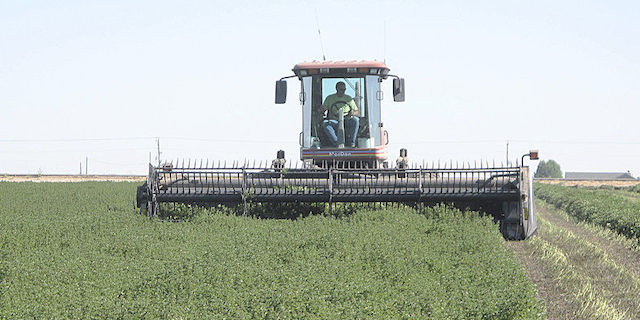ONLINE Dan Fulleton Farm Equipment Retirement Auction
THIS WILL BE AN ONLINE AUCTION Visit bakerauction.com for full sale list and information Auction Soft Close: Mon., March 3rd, 2025 @ 12:00pm MT Location: 3550 Fulleton Rd. Vale, OR […]
Published 4:24 pm Saturday, February 1, 2025

Idaho’s prominence for mint production has grown thanks to “virgin ground” free of verticillium wilt, and as farmers look for alternative crops.
“Idaho farmers are producing more mint than we ever have,” said Roger Batt, Idaho Mint Growers Association executive director.
“Sometimes the prices drop pretty bad with corn and hay and wheat. They’re looking for a crop that has a little bit better payout,” he added.
The Northwest grows almost all the nation’s mint, and interviews with experts indicate that Idaho could now be the top state for U.S. mint oil production.
USDA survey data shows a slightly different picture, with Washington on top, Idaho second and Oregon third. Experts said that while those figures captured larger trends fairly well, they were inaccurate.
State by state
Batt said Idaho produced about 1.7 million pounds of mint oil in 2024-25 off of 17,000 acres, 16,000 of which were peppermint. The state’s peppermint acreage was up 3-5%, he added.
Shane Johnson, executive director of the Washington Mint Commission, said figures from 2024-25 weren’t available, but should be in line with the previous season’s 1.62 million pounds.
The Oregon Mint Commission collected assessments on 1.24 million pounds so far in 2024-25, according to Bryan Ostlund, administrator.
Idaho leads the nation in peppermint production, while Washington is the top producer of spearmint.
Verticillium wilt
Verticillium wilt, a fungal disease, has been peppermint’s arch nemesis, causing plant wilting and death.
It also impacts Scotch spearmint, but native spearmint is resistant, Johnson said. He noted spearmint demand is much lower.
The fungus stays in the soil, which has forced the mint industry to migrate west in search of fresh ground, gradually settling on the West Coast.
“Idhao has been the new frontier. … They’ve been able to take that ground from Oregon and Washington,” Johnson said.
Due to difficulties growers have faced in recent decades, including with verticillium wilt, U.S. mint production has shrunk dramatically.
Oregon’s peak, for example, was 3.97 million pounds of oil in 1999-2000.
“We have lost a fair number of growers,” Ostlund said.
Cheaper foreign mint
A constant downward pressure on prices led companies to purchase cheaper mint from India and China, experts said.
Sometimes, foreign mint would be mixed with Northwest oil to make it more palatable for consumers.
In other cases, companies started using synthetic ingredients to simulate the taste of mint, Batt said. He urged consumers to check product labels.
Pandemic influence
The pandemic also impacted gum, lozenge and other mint sales.
Masks made repetitive chewing uncomfortable, employees worked remotely and didn’t eat out as much, travel shutdowns halted purchases at airports and people stopped going to the dentist.
The result was an oversupply that dropped prices.
“Mint oil stays good for years and isn’t a perishable commodity,” Ostlund said.
Positive signs
Experts said mint is finally recovering from the pandemic and there are positive indicators.
“We’re not quite there yet, but we’re seeing signs we’re headed in that direction,” Johnson said.
Batt said there’s more of a push for higher quality oil that the Northwest produces.
“Here we are a few years later, we’re seeing better prices, there is better demand for the oil,” Batt said.